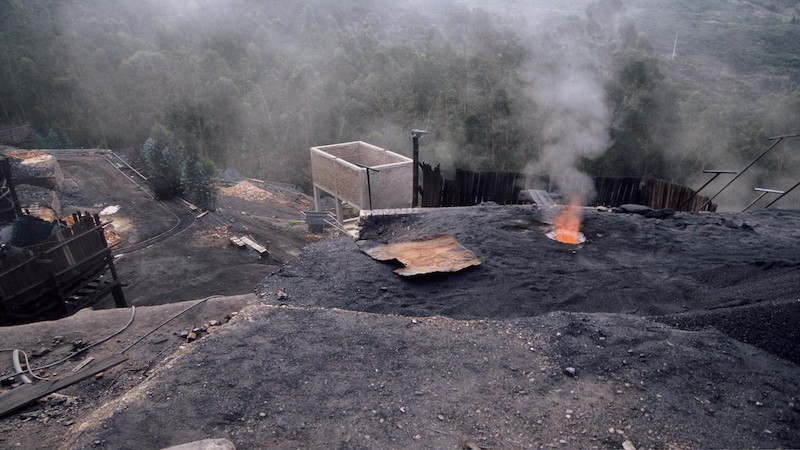A group of leading global development banks has agreed on long-awaited principles to align new financing with national and international climate goals.
Ten multilateral development banks (MDBs) – including the World Bank – have defined a multi-step process to establish whether projects meet the goals of the Paris Agreement, which aims to limit global warming to well below 2°C and to “pursue efforts” to keep it under 1.5°C.
The principles, which make good on a commitment first made by MDBs in 2017, require projects to line up with national climate plans and include a list of acceptable activities.
But analysts and campaigners are sceptical whether the rules will divert public money away from polluting activities and prevent global warming. A key criticism is that the framework does not explicitly prohibit financing for fossil fuel activities.
Focus on national plans
For a proposed investment to be considered under the new principles, it needs to align with countries’ climate strategies submitted to the UN, known as nationally determined contributions (NDCs).
If an activity – even a highly polluting one – appears in the relevant NDC, it will be waved through to the next step. The exceptions to this are support for coal mining, coal power plants and peat extraction, which are not considered Paris-aligned in any circumstance .
Laura Sabogal, policy advisor at E3G, considers it “very likely” that the banks’ portfolios will actually overshoot the Paris Agreement threshold because of the heavy reliance in the decision-making process on national climate plans that are “not robust enough”.
“These documents are extremely vague, not uniform or comparable,” Sabogal told Climate Home News. “Many NDCs are not aligned with a 1.5C, or even 2C, trajectory. If you aggregate all of these investments it is very likely the banks are not actually aligning with the goals of the Paris Agreement.”
According to Climate Action Tracker, no country’s NDC is compatible with 1.5C of global warming.
The UN Environment Programme says the current pledges made collectively by countries in their NDCs put the world on track for a temperature rise of between 2.4C and 2.6C by the end of the century.
First step in reforms
MDBs hold over $1.8 trillion in assets, giving them an outsized influence over the direction of funding flows toward developing countries in particular. They have long been accused of continuing to fund polluting projects and not doing enough to support climate-friendly ones. A growing coalition of nations, gathered in Paris last week, has been calling for deep reforms.
Fossil fuels, planes, ships and shares – What will be taxed for climate funds?
The new principles were agreed on by the African Development Bank, Asian Development Bank, Asian Infrastructure Investment Bank, Council of Europe Development Bank, European Bank for Reconstruction and Development, European Investment Bank, Inter-American Development Bank Group, Islamic Development Bank, New Development Bank and the World Bank Group.
Each lender will now have to adopt them into their own methodologies and use them in vetting investment proposals.
Across the ten lenders, the work to turn high-level principles into something tangible is at very different stages. At one end, the European Investment Bank says all its new investments have been Paris aligned since the start of 2021. Meanwhile, the African Development Bank hopes to reach that target by 2025.
If fully implemented, the new framework could mark a degree of progress toward more climate-friendly operations for some lenders.
Although mining and electricity generation from coal and peat are in an exclusion list of projects considered incompatible with the emission reduction goals of the Paris Agreement, this does not amount to an outright ban on investing in these activities. But experts believe it should further discourage development banks to fund them.
Multilateral banks’ investments in industrial livestock undermine their Paris climate commitments
Of the MDBs that signed up to this initiative, the Islamic Development Bank and the African Development Bank are the only ones without an explicit commitment to end coal finance. The African lender’s president Akinwumi Adesina pledged to scrap coal funding in 2019, but this has yet to be formally reflected in the bank’s energy policy.
Aki Kachi, an analyst at the New Climate Institute, told Climate Home News that “inevitably, it was always going to be the lowest common denominator between all the banks”.
“Some may go further and interpret it in a more ambitious way, others will use all of the flexibility to carry on almost with business as usual,” he added.
Campaigners pushing for MDBs to stop funding all fossil fuel operations were also left disappointed by the exclusion of any mention of oil and gas in the framework. “As they are not part of the exclusion list these will continue to be assessed on a case-by-case basis,” said Sabogal.
Political considerations
The document agreed on by the development banks draws a scenario in which a country is seeking funding for a fossil-fuel-powered technology. If, for instance, the country’s climate strategy states specifically that technology needs to be phased out by 2035, a project with a ten-year lifetime submitted in 2025 would not be considered aligned. But, if the NDC does not mention that fossil fuel activity at all, it will be allowed to progress to the next stage of assessment.
The other steps in the process look at the consistency with sector-specific decarbonisation pathways, the feasibility of cleaner alternatives and the risk of creating stranded assets.
Kachi said ultimately a lot would depend on the interpretation given by the banks’ officers, which is often driven by the political dynamics of their governance.
“We can’t assume this is merely a technical exercise,” he said. “It is very much a political one. The strategies are driven by political agendas within the banks’ management and shareholders. It’s only going to have an impact if the shareholders want that result.”
